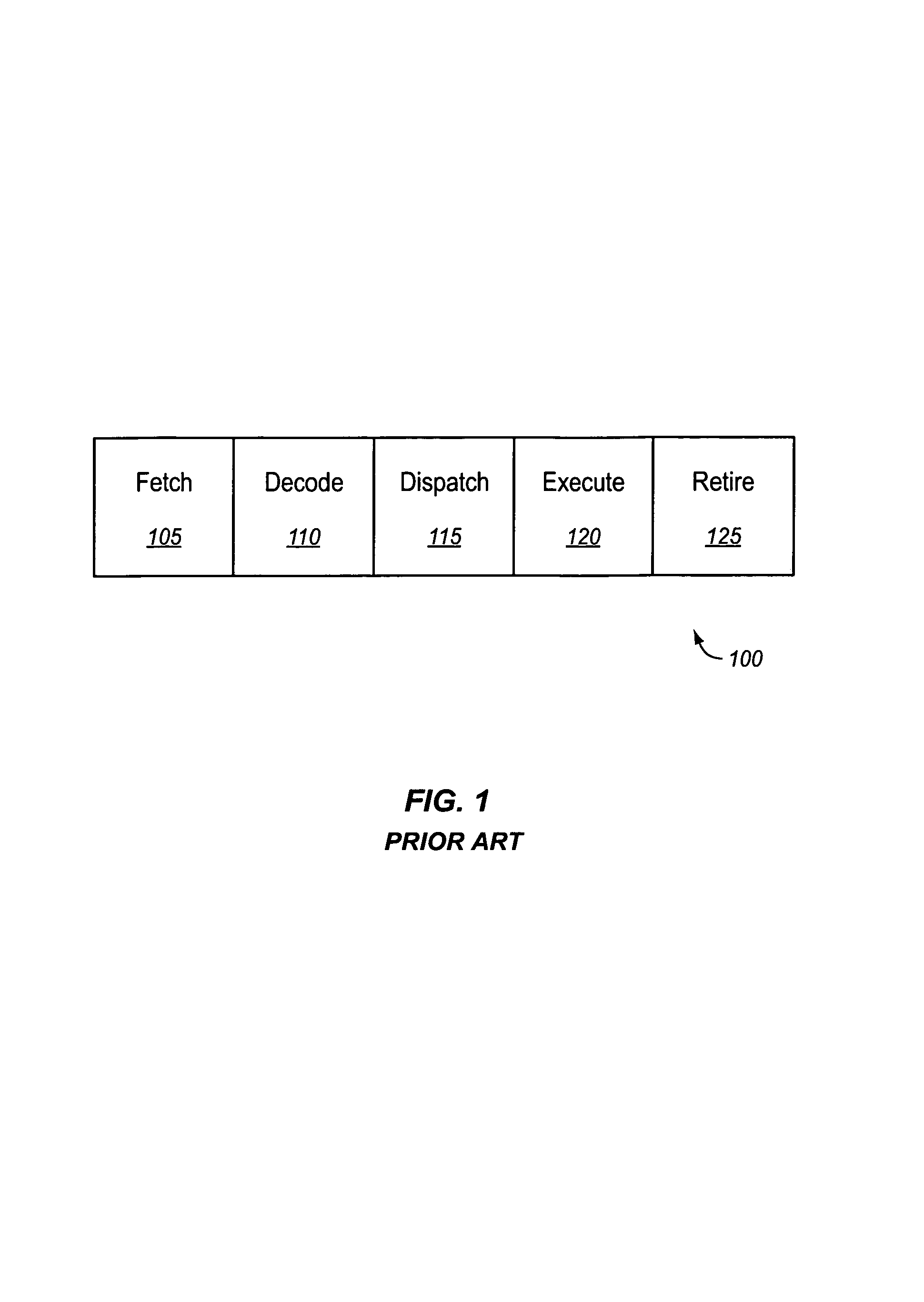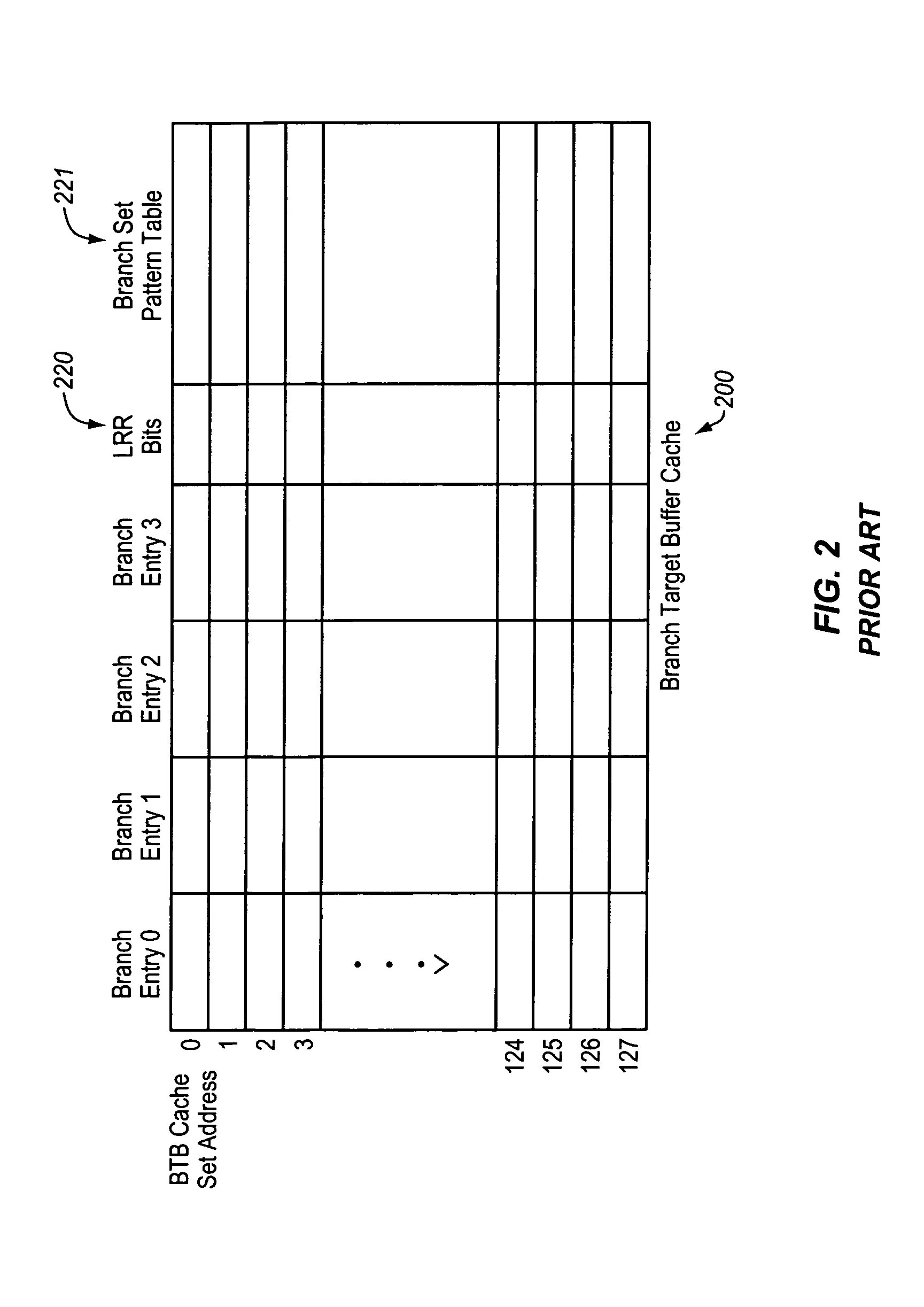Branch target buffer (BTB) including a speculative BTB (SBTB) and an architectural BTB (ABTB)
a branch target buffer and speculative branch technology, applied in the field of branch prediction, can solve the problems of stalling of the instruction pipeline, mispredicting tight loops, and deallocation of good branches
- Summary
- Abstract
- Description
- Claims
- Application Information
AI Technical Summary
Problems solved by technology
Method used
Image
Examples
Embodiment Construction
[0021]A method and apparatus are described for improving the performance of branch prediction using a combination of speculative branch target buffer and architectural branch target buffer. According to one embodiment, a branch target buffer includes both a speculative branch target buffer (SBTB) and an architectural branch target buffer (ABTB). The SBTB may be implemented as a relatively small structure that supports the ABTB, and that can be used to maintain speculative branch data for in-flight branches (i.e., those that have been fetched but not yet retired). Thus, the ABTB need only store the architectural or actual branch data. The combination of ABTB and SBTB described herein seek to improve the cost and performance of branch prediction, which essentially lowers cost and improves performance of a microprocessor.
[0022]According to one embodiment, the SBTB allows the speculative history and the selection bit to be eliminated from the ABTB, and allows the ABTB to be single-porte...
PUM
 Login to View More
Login to View More Abstract
Description
Claims
Application Information
 Login to View More
Login to View More - R&D
- Intellectual Property
- Life Sciences
- Materials
- Tech Scout
- Unparalleled Data Quality
- Higher Quality Content
- 60% Fewer Hallucinations
Browse by: Latest US Patents, China's latest patents, Technical Efficacy Thesaurus, Application Domain, Technology Topic, Popular Technical Reports.
© 2025 PatSnap. All rights reserved.Legal|Privacy policy|Modern Slavery Act Transparency Statement|Sitemap|About US| Contact US: help@patsnap.com



